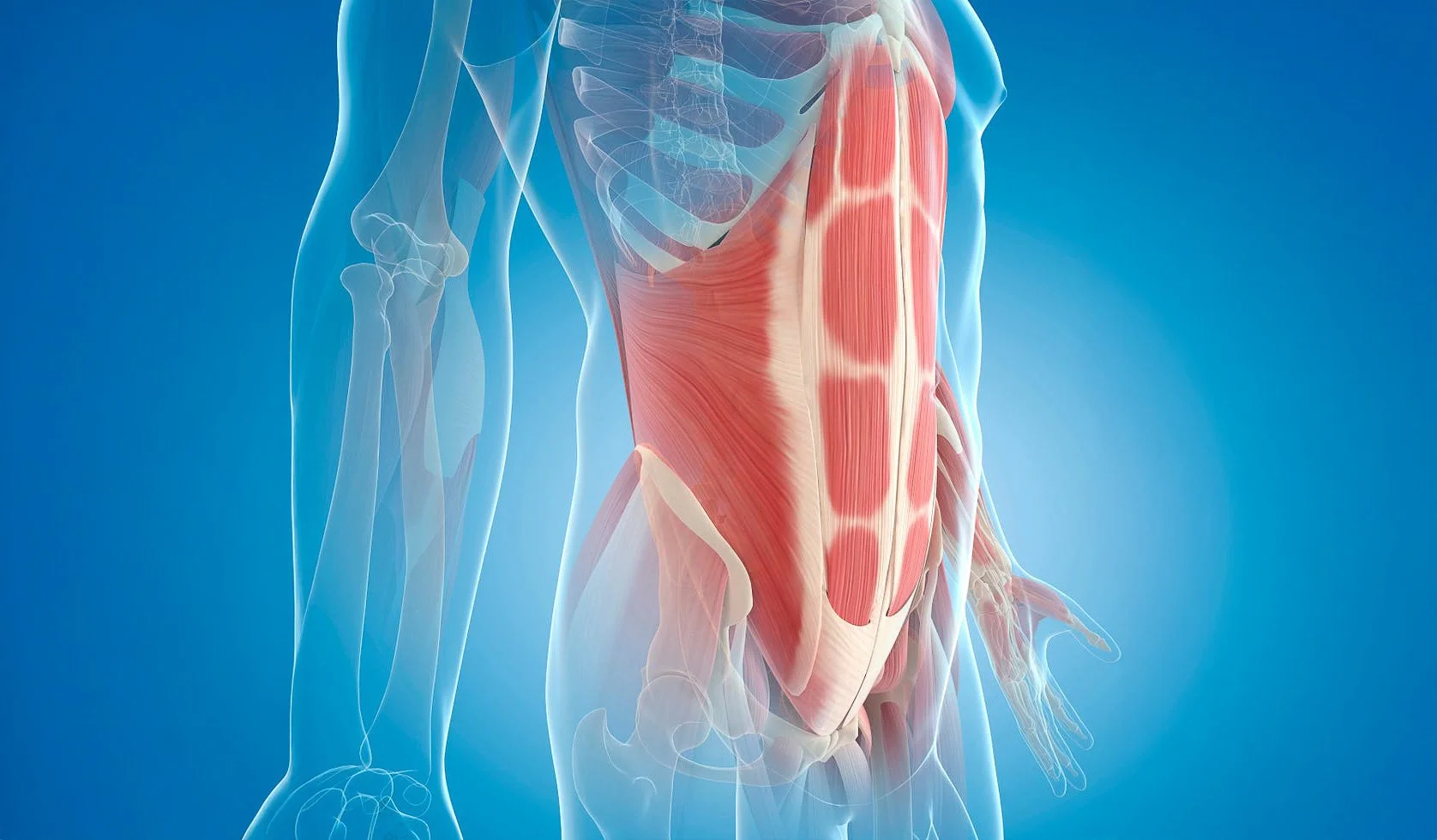Core Truths: Why Training Your Core Is About More Than Just Abs
May 13, 2025
Written by Sally Larrington-Brown
When you hear someone say “I want to work on my core,” chances are they’re picturing ab crunches and a six-pack. But here's the truth: your abs are just one part of a much larger, more powerful system—your core.
Understanding the difference between your abs and your core is key to training smarter, improving posture, avoiding injury, and becoming stronger in everything you do—whether it’s lifting weights, running, or just standing tall.
Abs vs. Core: What’s the Difference?
Think of it like this: your biceps and triceps are muscles that make up part of your arms. In the same way, your abs are a muscle group, while your core is an entire region made up of multiple muscles working together.
Your core runs from your neck all the way down to your pelvis, and includes muscles at the front, back, and sides of your trunk.
Here are some of the key players:
Transverse abdominis – A deep muscle that wraps around your torso like a belt and stabilizes your spine and pelvis.
Internal & external obliques – Diagonal muscles that help with twisting and side bending.
Rectus abdominis – The “six-pack” muscle that helps you bend forward.
Multifidus – Small back muscles that help stabilize your vertebrae.
Erector spinae – A group of muscles along the spine that help you stand upright and extend your back.
Why Core Training Matters
Sure, training your core can help sculpt your midsection, but its real superpower lies in how it supports your body in movement, posture, and performance. Here's what the science—and real-life experience—tells us.
Better Posture:
Core training doesn’t just make you look stronger—it helps you stand taller. A study published in Isokinetics and Exercise Science showed that participants who did Pilates three times a week for two months significantly improved their postural stability.
Translation? Less slouching, less neck and back pain, and more confidence.
More Strength Everywhere:
You can't build true strength without a solid foundation. Your core plays a major role in exercises like deadlifts, squats, and even overhead presses. Without core stability, these lifts can become dangerous and ineffective.
If you’re rounding your shoulders or constantly feeling tension in your lower back, that’s your body signalling weak core engagement. Training your core helps correct that and enhances your strength gains across the board.
Improved Sports Performance:
Whether you’re a runner, a cyclist, or play any sport involving movement, your core is your control centre. Research from Ohio State University found that many athletes under train their deep core muscles—leading to poor posture, low back pain, and even reduced breathing efficiency.
When your core is strong, you hold yourself upright, breathe more efficiently, and move more powerfully. In fact, just lifting your head and pulling your shoulders back when you run can increase your oxygen intake. And guess what supports that posture? Yep—your core.
How to Properly Engage Your Core
Knowing which muscles make up the core is one thing—knowing how to activate them during exercise is another.
Here’s a simple way to learn how to engage your core:
Lie on your back, knees bent, feet flat.
Try to slide a hand under your lower back.
Gently press your back into the ground, closing the gap so your hand can’t pass through.
Tense your stomach muscles, like you’re bracing for a punch, but still able to breathe.
Hold for 6–10 seconds. Rest and repeat 3–4 times.
Once you can feel that core engagement, try doing it standing. Then, begin applying it during exercises like squats or planks. Over time, this bracing will become second nature—improving balance, posture, control, and power.
Can Core Exercises Reduce Belly Fat?
Let’s bust a myth: you can’t spot-reduce fat—not even from your stomach. Core workouts strengthen and shape the muscles of your midsection, but reducing belly fat requires a calorie deficit, created through smart nutrition and regular exercise.
That said, building muscle in your core makes your midsection tighter and more defined—so when the fat comes off, the shape is already there.
Final Thoughts: Your Core Powers Everything
Your core is involved in every movement you make—from sitting at a desk to sprinting up a hill. Training it helps with injury prevention, athletic performance, strength development, and just feeling better in your body.
So next time you're tempted to skip the core work—don’t. It’s not just about the six-pack. It’s about building a body that moves well, feels strong, and stands tall.
Pro tip: Our RX classes are specifically geared to strengthen your core.


